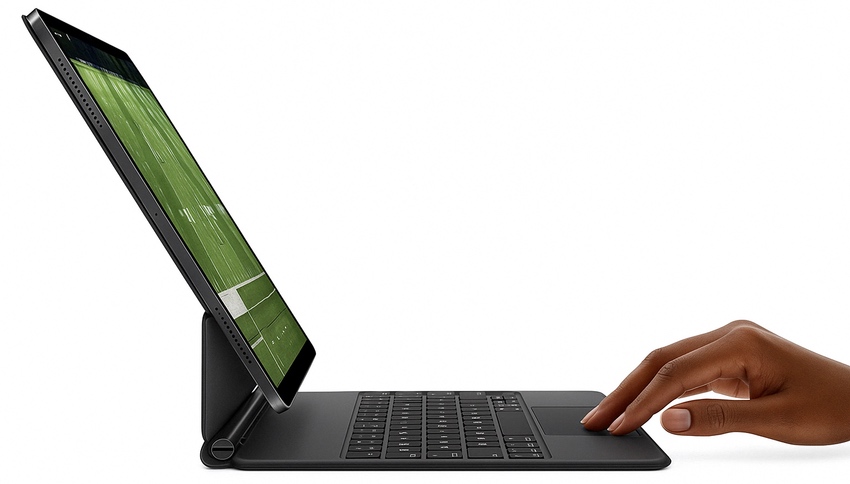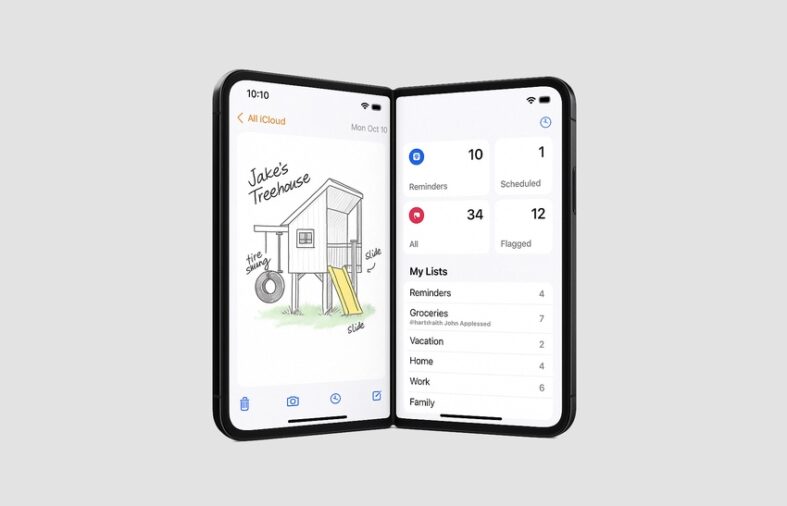Apple is moving closer to launching its first-ever foldable iPhone, which is rumored to launch by the end of 2026, and the excitement is building up. Recent leaks point to a crease-free Samsung-made OLED display with a premium hinge design and the company’s signature late but polished approach. While most people are looking at Samsung, Google, and Huawei as the foldable iPhone’s competition, the real threat is resting in the shadows at Apple Park – it’s the iPad.
How the iPad can undermine the foldable iPhone before Apple even launches it
Apple’s premium tablets, especially the iPad mini and the iPad Air, could pose the biggest challenge to the foldable iPhone’s success. Not because the iPad is better, but simply because they exist and serve a similar function, offering nearly everything that a foldable would at an extremely affordable price.
We have devised five reasons why the iPad lineup is the biggest hurdle Apple’s first foldable would have to overcome.
1. The iPad already does what a foldable iPhone promises – at a lower price
The entire point of launching a foldable phone is to combine the compact form factor of an iPhone into a tablet-like experience. If we are judging the foldable iPhone considering portability, the iPad mini already delivers and also adds a handful of additional perks:
- It has a large but portable 8.3-inch display
- Supports Apple Pencil
- Features Split View multitasking
- Faster performance with A17 Pro chip
- All at a price under $500
When we compare these aspects to the likes of a foldable iPhone, it does not make sense at all. The foldable iPhone will possibly be priced well above $2,000, according to recent reports, and buying the iPad mini and an iPhone just makes more financial sense than buying a single device that does both but compromises battery life, app scaling, and durability.

2. iPadOS is already optimized for larger screens, but iOS is not
Apple has spent years perfecting its iPadOS platform for a bigger display, taking into account productivity and multitasking usage. From Split View and Slide Over to Stage Manager and support for full external monitors, the iPad already feels like a hybrid device, resting somewhere between a tablet and a Mac.
In comparison, iOS is still a single-column experience built for single-app usage at a time. Even if Apple rebuilds iOS for multitasking with dual-window support, it would still remain a smartphone pretending to be an iPad. iPadOS, on the flip side, has spent years under development and rests perfectly in the tablet space with enhanced productivity and multitasking capabilities. It continues to evolve in exactly the right direction where foldables want to go.
The foldable iPhone will always feel like a standard iPhone unless the company gives it a special and more adaptive OS. If not, the iPad would continue to put a shadow over the foldable. Apple should also introduce new Apple Intelligence features with iOS 19, which would change user perspective of the device and open new doors for better productivity.
3. The iPad ecosystem is stronger than ever before
The iPad is now more powerful than it has ever been, with its own set of peripherals that convince users to get it. The foldable iPhone would have to sit in the industry for years before Apple introduces supporting accessories to make it more productive. With the launch of the M4 iPad Pro, Apple also made Logic Pro and Final Cut Pro apps compatible with the iPad, which offers a full-fledged and desktop-class experience on a tablet.
Aside from app compatibility, Apple also upgraded the full ecosystem of accessories, including the Magic Keyboard and Apple Pencil Pro, which makes the iPad more powerful than it has ever been. To be fair, the iPad is no longer a media consumption device anymore – it is a productivity tool, a creator’s canvas, and even a gaming device that can run AAA titles.

More importantly, iPad users are already invested in Apple’s ecosystem, with millions of users using an iPad alongside their iPhones. This means that not many of them would need to drop both for a single device that may not do either job better. If the foldable iPhone does not clearly outperform both the iPhone and the iPad, it might fail to replace either one, leaving it in an awkward and unnecessary middle ground.
4. There is a risk of product cannibalization and user confusion
Apple is about to launch a product that it has been avoiding for so long. The company simply does not want to merge the iPhone and iPad together but create an all-new niche, which is hard to justify in the presence of these two devices. Steve Jobs famously said, “If you make a touchscreen Mac, you end up with a toaster fridge.”
Even though the company’s product philosophy has evolved since then, the principle still holds: each device must retain and serve a clear, distinct purpose. A foldable iPhone would simply blur the lines between the iPhone and iPad. It was previously reported that the foldable iPhone will feature a 7.8-inch internal display, which is about the same size as that of the iPad mini. What happens to the iPad mini after the foldable becomes popular? What is the future of the tablets after foldable devices become mainstream? Will users stop buying tablets just because their phone can unfold into one?
At the end of the day, Apple would not aggressively push the foldable iPhone if it means that it will eat into iPad sales. The iPad generates billions every year for the company and dominates the tablet market globally.
5. iPad offers a more durable, reliable, and familiar experience
To be honest, foldables are still fragile compared to standard smartphones or tablets, which poses serious durability concerns. Moreover, repairing a faulty foldable screen or broken hinge could cost hundreds of dollars that most users are not willing to just throw away. Battery life is another concern, which could revert users back to their phones and tablets.
Even though Apple has been researching and developing technologies that will resist these concerns, the foldable iPhone would still face the same challenge as every other foldable phone: longevity and practicality.

On the flip side, the iPad is a single slab of glass enclosed in metal housing with no folding or moving parts, making it durable and reliable across the board. You can toss it in a bag, hand it to your child, use it with a keyboard, and many more practical use cases that a foldable simply cannot match. This brings us down to assume that until the foldable iPhone proves it can match the iPad in every usability and durability scenario, many users would still stick with what they know already works.
AppleRadar’s Take: Apple’s biggest competition might just be itself
It is safe to assume that Apple’s foldable iPhone will face the same uphill battle as Android foldables did, which is to gain user trust, provide longevity, and justify the hefty price tag. While the company already has trust and a vast loyal fanbase, what it does not have is a clean way to position the new product against its existing lineup.











Leave A Reply